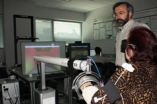(Press-News.org) Boston, Mass. – Nearly one-half of U.S. adults who use the Internet participate in social networks. While these increasingly include health-focused networks, not much is known about their quality and safety. In one of the first formal studies of social networking websites targeting patients, researchers in the Children's Hospital Boston Informatics Program performed an in-depth evaluation of ten diabetes websites.
Their audit found large variations in quality and safety across sites, with room for improvement across the board. As reported online January 24 in the Journal of the American Medical Informatics Association, only 50 percent of the sites presented content consistent with diabetes science and clinical practice. Even fewer offered both scientific accuracy and patient protections such as safeguarding of personal health information, effective internal and external review processes and appropriate advertising.
For instance, seven of the ten sites did not allow members to restrict the visibility of their profiles. Five carried advertisements that were not labeled as such. And three sites went as far as to advertise unfounded "cures."
"We saw that people are sharing incredible amounts of personal health information on these sites, including highly identifiable information," says Elissa Weitzman, ScD, MSc, lead author on the study and an assistant professor in the laboratory of Kenneth Mandl, MD, MPH. "They are eager to accelerate their understanding of the disease, obtain support, find treatments and see if their experience is common or different."
"There is on the one hand an enormous focus in the U.S. on health information privacy," Mandl adds. "But privacy in a social network is somewhat of an oxymoron. On the whole, these networks tend to be about exposing your information online."
The team evaluated diabetes websites that appeared prominently in Google searches and allowed members to create personal profiles and interact with each other. They looked at four key factors:
agreement of content with diabetes science and clinical practice standards,
practices for auditing content and supporting transparency,
accessibility and readability of privacy policies, and
the degree of control members had over the sharing of personal data.
The average number of members per website was 6,707. Activity ranged widely among the sites, from over 100 new posts per day to less than 5 new posts per day.
The majority of sites studied did not include a "disclaimer" encouraging patients to discuss their care regimen with a healthcare provider. Many sites also missed opportunities to communicate essential diabetes information, such as the definition of "A1c"—a biomarker commonly used by diabetics to access blood glucose levels.
In addition to recommending improvements in these areas, the authors saw a need for increased moderation, for the credentials of moderators to be more visible and for periodic external review. Further, potential conflicts of interest—such as ties to the pharmaceutical industry—needed to be more clearly disclosed, and privacy policies easier to understand.
Diabetes is only one illness in the rapidly growing list for which there are online social networks with thousands of users. The researchers chose to study diabetes-related networks because they were among the earliest to emerge and remain among the most active. They and colleagues in the Children's Hospital Informatics Program are further studying how these sites are used—how people choose to interact with them and how specifically they share their medical information. Last year, Mandl and Weitzman developed an application for the social networking website TuDiabetes that allows users to submit their A1c levels to be displayed in a worldwide map, as part of an effort to encourage diabetes management and inform public health efforts and research.
The two believe that the emergence of online health communities and their large number of participants reveal unmet needs for information and support of patients and families. "Social networking activity is clearly replacing or adding value that is missing in the standard healthcare system," Mandl says.
"We sought to jump start a conversation about how to balance patients' safety with their autonomy," Weitzman says, "as we're in an era where terrific levels of healthcare communication are happening outside of the usual channels."
###
This study was funded by the Centers for Disease Control and Prevention and the National Institutes of Health, including the National Institute on Alcohol Abuse and Alcoholism.
Safety Tips for Patients Using Online Social Networks
Look for sites where the basic description of the disease and how to care for it is consistent with information provided by your doctor. Be very cautious of sites that advertise miracle "cures."
Find the privacy policy of any website where you register as a member, and make sure that you understand it.
Try to use sites where you have maximal control over the sharing of your health data—where you can designate whether the information you disclose will be available to anyone online, members only or members who are "friends."
Look for websites that clearly label advertisements and disclose conflicts of interest.
Try to use sites that have moderators and at least periodically undergo external review.
Always remember that going online is not a replacement for visiting your doctor.
Children's Hospital Boston is home to the world's largest research enterprise based at a pediatric medical center, where its discoveries have benefited both children and adults since 1869. More than 1,100 scientists, including nine members of the National Academy of Sciences, 12 members of the Institute of Medicine and 13 members of the Howard Hughes Medical Institute comprise Children's research community. Founded as a 20-bed hospital for children, Children's Hospital Boston today is a 392-bed comprehensive center for pediatric and adolescent health care grounded in the values of excellence in patient care and sensitivity to the complex needs and diversity of children and families. Children's also is the primary pediatric teaching affiliate of Harvard Medical School. For more information about research and clinical innovation at Boston Children's visit: Vector Blog.
Quality varies in social networking websites for diabetics
Researchers make recommendations for improving sites, provide safety tips for users
2011-02-09
ELSE PRESS RELEASES FROM THIS DATE:
Dutasteride not a cost-effective way to prevent prostate cancer in some men
2011-02-09
DALLAS – Feb. 8, 2011 – The popular drug dutasteride may not be a cost-effective way to prevent prostate cancer in men who are at elevated risk of developing the disease, according to findings by a UT Southwestern Medical Center researcher.
In a study available in the January issue of Cancer Prevention Research, investigators found that the medication, at an annual cost of $1,400, is impractical when compared to the marginal impact on survival and quality of life in at-risk groups. The drug is indicated for the treatment of enlarged prostates but also is widely prescribed ...
MU researcher says the next large central US earthquake may not be in New Madrid
2011-02-09
COLUMBIA, Mo. – This December marks the bicentennial of the New Madrid earthquakes of 1811-12, which are the biggest earthquakes known to have occurred in the central U.S.
Now, based on the earthquake record in China, a University of Missouri researcher says that mid-continent earthquakes tend to move among fault systems, so the next big earthquake in the central U.S. may actually occur someplace else other than along the New Madrid faults.
Mian Liu, professor of geological sciences in the College of Arts and Science at MU, examined records from China, where earthquakes ...
The international digital divide
2011-02-09
The developed nations must invest in information and communications technologies (ICT) in the developing world not only the close the so-called digital divide but to encourage sustainable economic development and to create new markets for international commerce.
Many observers have suggested that the gap between those with access to ICT and those without it is growing. But, all world citizens should have the opportunity to benefit from open access to ICT. The benefits are obvious to those given access in terms of education and opportunity, but ICT availability in developing ...
Study: Consumers value safer food more than current analyses suggest
2011-02-09
COLUMBUS, Ohio – Government regulators could more realistically assess the value of improving food safety if they considered the fact that consumers typically want to avoid getting sick – even if it means they have to pay a little extra for safer food, researchers say.
In the world of food regulation, cost-benefit analyses are a primary tool for assessing the societal benefits of mandating more stringent – and more expensive – processing practices. In most cases, regulators determine a dollar value associated with pursuing new rules by estimating how many illnesses and ...
Thoughts of hopes, opportunities keep people from clinging to failing investments
2011-02-09
It's a common problem in the business world—throwing good money after bad. People cling to bad investments, hoping that more time, effort, and money will rescue their turkey of a project. A new study published in Psychological Science, a journal of the Association for Psychological Science, finds that changing people's mindsets can make them more likely to abandon a failing investment.
"These situations happen all the time," says Assistant Professor Daniel C. Molden, of Northwestern University, who conducted the study with his graduate student Chin Ming Hui. "They happen ...
Study shows delayed-enhancement MRI may predict, prevent strokes
2011-02-09
SALT LAKE CITY, Feb. 8, 2011 – Researchers at the University of Utah's Comprehensive Arrhythmia and Research Management (CARMA) Center have found that delayed-enhancement magnetic resonance imaging (DE-MRI) holds promise for predicting the risks of strokes, the third leading cause of death in the U.S. Their latest study on a novel application of this technology appears in the Feb. 15 issue of the Journal of the American College of Cardiology. (http://content.onlinejacc.org/cgi/content/abstract/57/7/831)
The study included 387 patients who were treated for atrial fibrillation ...
Brief diversions vastly improve focus, researchers find
2011-02-09
CHAMPAIGN, Ill. — A new study in the journal Cognition overturns a decades-old theory about the nature of attention and demonstrates that even brief diversions from a task can dramatically improve one's ability to focus on that task for prolonged periods.
The study zeroes in on a phenomenon known to anyone who's ever had trouble doing the same task for a long time: After a while, you begin to lose your focus and your performance on the task declines.
Some researchers believe that this "vigilance decrement," as they describe it, is the result of a drop in one's "attentional ...
JAMA features NJIT biomedical engineer helping stroke patients
2011-02-09
The Journal of the American Medical Society ("Medical News & Perspectives", Jan. 19, 2011) featured the research of NJIT Associate Professor Sergei Adamovich, a biomedical engineer. Adamovich and his research partners, physical therapists Alma Merians, PhD, PT, and Eugene Tunik, PhD, PT, at the University of Medicine and Dentistry of New Jersey, have developed innovative robotic and virtual reality-based video game therapies to help stroke patients regain use of hands and arms.
JAMA reported that the efforts of this team are making headway. Twenty-four patients who ...
Why leatherback turtles linger in South Pacific Gyre, and why it matters
2011-02-09
VIDEO:
Tagging and tracking leatherback sea turtles has produced new insights into the turtles' behavior in a part of the South Pacific Ocean long considered an oceanic desert. The new data...
Click here for more information.
Leatherbacks. They are the Olympians of the turtle world – swimming farther, diving deeper and venturing into colder waters than any other marine turtle species. But for all their toughness, they have still suffered a 90 percent drop in their population ...
Tool makes search for Martian life easier
2011-02-09
RICHLAND, Wash. – Finding life on Mars could get easier with a creative adaption to a common analytical tool that can be installed directly on the robotic arm of a space rover.
In a recent paper published online in the journal Planetary and Space Science, a team of researchers propose adding a laser and an ion funnel to a widely used scientific instrument, the mass spectrometer, to analyze the surfaces of rocks and other samples directly on Mars' surface. The researchers demonstrated that the combined system could work on the spot, without the sample handling that mass ...
LAST 30 PRESS RELEASES:
Superradiant spins show teamwork at the quantum scale
Cleveland Clinic Research links tumor bacteria to immunotherapy resistance in head and neck cancer
First Editorial of 2026: Resisting AI slop
Joint ground- and space-based observations reveal Saturn-mass rogue planet
Inheritable genetic variant offers protection against blood cancer risk and progression
Pigs settled Pacific islands alongside early human voyagers
A Coral reef’s daily pulse reshapes microbes in surrounding waters
EAST Tokamak experiments exceed plasma density limit, offering new approach to fusion ignition
Groundbreaking discovery reveals Africa’s oldest cremation pyre and complex ritual practices
First breathing ‘lung-on-chip’ developed using genetically identical cells
How people moved pigs across the Pacific
Interaction of climate change and human activity and its impact on plant diversity in Qinghai-Tibet plateau
From addressing uncertainty to national strategy: an interpretation of Professor Lim Siong Guan’s views
Clinical trials on AI language model use in digestive healthcare
Scientists improve robotic visual–inertial trajectory localization accuracy using cross-modal interaction and selection techniques
Correlation between cancer cachexia and immune-related adverse events in HCC
Human adipose tissue: a new source for functional organoids
Metro lines double as freight highways during off-peak hours, Beijing study shows
Biomedical functions and applications of nanomaterials in tumor diagnosis and treatment: perspectives from ophthalmic oncology
3D imaging unveils how passivation improves perovskite solar cell performance
Enriching framework Al sites in 8-membered rings of Cu-SSZ-39 zeolite to enhance low-temperature ammonia selective catalytic reduction performance
AI-powered RNA drug development: a new frontier in therapeutics
Decoupling the HOR enhancement on PtRu: Dynamically matching interfacial water to reaction coordinates
Sulfur isn’t poisonous when it synergistically acts with phosphine in olefins hydroformylation
URI researchers uncover molecular mechanisms behind speciation in corals
Chitin based carbon aerogel offers a cleaner way to store thermal energy
Tracing hidden sources of nitrate pollution in rapidly changing rural urban landscapes
Viruses on plastic pollution may quietly accelerate the spread of antibiotic resistance
Three UH Rainbow Babies & Children’s faculty elected to prestigious American Pediatric Society
Tunnel resilience models unveiled to aid post-earthquake recovery
[Press-News.org] Quality varies in social networking websites for diabeticsResearchers make recommendations for improving sites, provide safety tips for users


